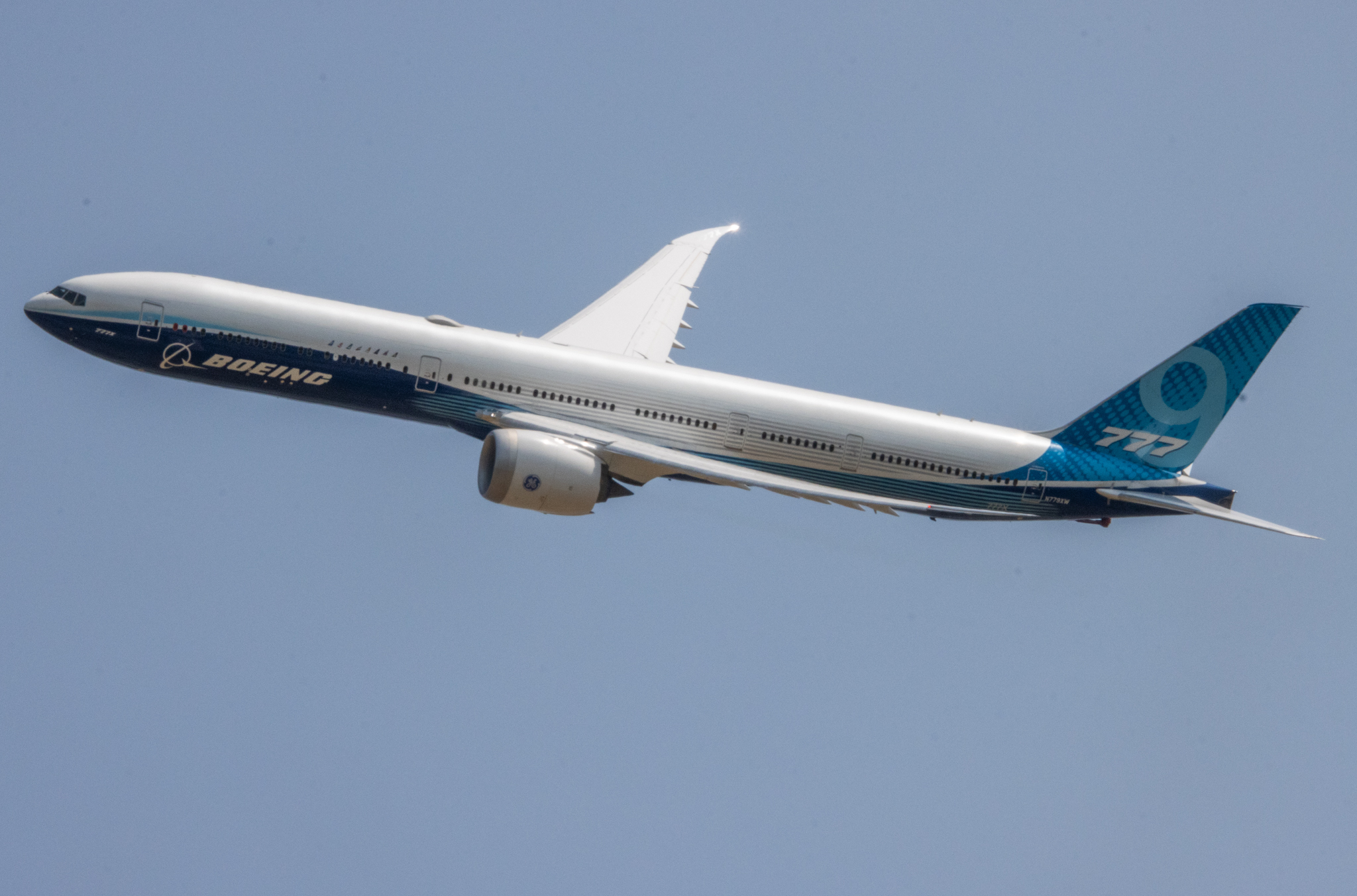The Boeing 777X is facing a new set of technical difficulties. On Monday, August 19, the American planemaker discovered fatigue cracks in the metal piece linking the engine with the wing.
A faulty piece at the heart of the problem
As first reported by the Air Current, this particular piece of metal is a crucial structural piece that helps to keep the engine in place. It is reported that the first aircraft to have suffered the failure was testbed vehicle WH003 after completing a five-hour transpacific flight to Hawaii.
It has since been identified on other test aircraft.
Unlike the rest of the engine, which is manufactured by General Electric (GE), this part of the GE 9X is designed in-house by the Seattle company.
USA Today reported that all flight testing on the aircraft has been momentarily suspended.
There are no official statements on this incident on Boeing’s media page. However, they told the newspaper the following.
“During scheduled maintenance, we identified a component that did not perform as designed. Our team is replacing the part and capturing any learnings from the element and will resume flight testing when ready.”
What does it mean for the program’s certification and delivery?
Boeing recently celebrated the beginning of the FAA testing, an important milestone where regulators get to fly on the aircraft to ensure everything meets safety criteria.
This incident has not officially halted the certification process; it only means that since the aircraft cannot fly, it cannot continue the certification flights—but these will resume momentarily.
So, despite all the recent turmoil, we have never been closer to entering the service of the new world’s largest twin-engine aircraft.
Earlier this year, BOE has told carriers like Singapore Airlines executives to expect the first deliveries by late 2025.
What is the 777X?
This aircraft is a new iteration of what is already the most popular long-range aircraft ever made, the 777. It has seen 1,735 deliveries since the first airframe rolled out in 1983. The “classic” versions are as follows:
- Boeing 777-200: The original 777, a high-density airliner, was primarily designed for the domestic US market, where flights are five to six hours long and in very high demand.
- Boeing 777-200ER: This is the longer-range version of the original 777 with added fuel tanks. Its ideal market is flights between 7 and 12 hours. Some notable current operators are Austrian and British Airways.
- Boeing 777-200LR: This is the “classic” 777 with the most range; Qatar Airways famously used it on their longest route, Doha to Auckland, before COVID.
- Boeing 777-300: The elongated 777-200 is mainly used for high-density regional routes in Asia. One of the only remaining operators is Cathay Pacific.
- Boeing 777-300ER: Dubbed the Worldliner (B77W), the most popular and modern “classic” 777 was still in production in 2022. Notable operators include Emirates, Air France, and American Airlines.
Some of these variants, like the -200LR and -300ER, were later developed into freighters as dedicated jets like the former and converted aircraft in the latter case.
As for the 777X, there are two variants :
- Boeing 777-9: The flagship and current active test bed, it’s the most extended version. It is set to replace the 777-300ER
- Boeing 777-8: The shorter version of the 777 also has an improved range over the 777-9; its role is mainly to replace the 777 LR.
The 777-8 is set to also be available as a dedicated freighter.
An already successful aircraft
Despite all the issues the manufacturer has been facing. The program is still quite successful, with 501 airframes on order. Thats almost double that of the A380.
Bear in mind that these orders are mostly to replace the aging 747-400s and A340s, but once the 777s start being retired, then the 777X will likely see the order book grow

Leave a Reply